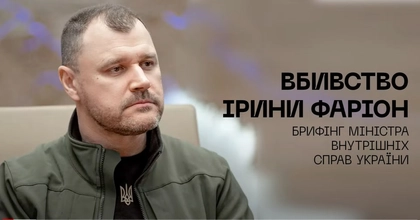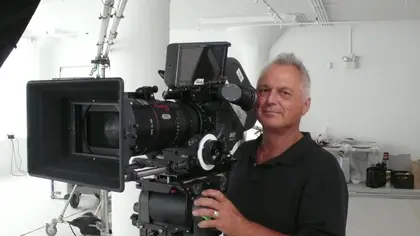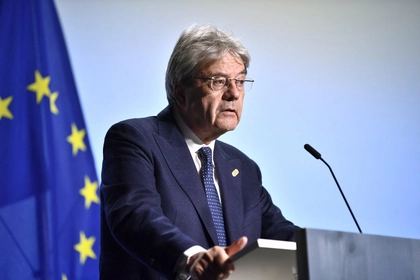Ukrainian-American Cinematographer Stefan Czapsky worked with many filmmakers throughout his career but is best known for collaborating with Oscar-winning director Tim Burton on a trifecta of films: the surrealistic “Edward Scissorhands” with its off-kilter gothic suburbia, the dark and brooding “Batman Returns,” and the exquisite black and white “Ed Wood.” The latter film won Czapsky Best Cinematography awards from the National Society of Film Critics Association, the New York Film Critics Circle, the Boston Society of Film Critics, and the Los Angeles Critics Association.
JOIN US ON TELEGRAM
Follow our coverage of the war on the @Kyivpost_official.
A cinematographer is one of the most critical jobs on a film set because they are responsible for the production’s visual style. Also known as directors of photography (or DP for short), they work closely with the director to make artistic and technical decisions for photographing the film through their choice of lighting, framing, camera angles, and more.
Aside from films, the New-York-based Czapsky works on high-end commercials and has won four Clio Awards, which honor excellence in advertising. Some of this recent television work includes the crime series “Shades of Blue” with Jennifer Lopez and Ray Liotta, the comedy “God Friended Me” and the current Netflix holiday movie series “Christmas with You.” Czapsky is presently working on “Law & Order: Organized Crime.”

Farion’s Killer Prepared Disguises, Had Another Victim in His Sights, Interior Minister Says
Czapsky’s public biographies often state that he is German-born, and while that is technically true, he was actually born in a displaced persons camp in 1950, surrounded by other Ukrainians who had been displaced by the Second World War. Czapsky spoke to Kyiv Post about his journey from being one type of displaced person to becoming another type entirely.
You were born in Germany to Ukrainian parents and came to the U.S. at only five months old as a displaced person. What do you know of your family’s history before your birth?
Most of the stuff I knew about Ukraine was from stories I would hear from my mother as a kid in Ohio. My parents didn’t speak much about it because those were hard times. What I know is that when the Germans captured parts of Ukraine and Russia (during World War II), my parents, who were from different villages, were put on a train and sent to Germany as part of a quota of forced labor.
How old were your parents then, and what kind of labor did they do?
My mom was 14, and my dad was 16 at the time. They had agrarian skills, so my mom carried water for a farmer. My dad knew how to run horses, so he did that. When the war ended, they were in a section of Germany liberated by the British, who put them in a refugee camp. My parents didn’t know each other until that camp.
Your family immigrated to the United States as displaced persons and settled in Cleveland, Ohio, which today has quite a large population of Ukrainians. What was it like growing up there?
The adults would have these social gatherings on the weekends where Ukrainians would eat, get a bit drunk, and sing songs. I’d pick up stories here and there about Ukraine, about Germany. There was this reference by the grown-up that so-and-so at these things was our aunt or uncle or cousin, but we weren’t related by blood. We were related by being DPs. Inevitably, as a kid at these get-togethers, you’d run up to the table to grab a slice of cake or a cookie, and one of the grown-ups would pat you on the head and say, “I hope that you never have to live through what we lived through.” They weren’t talking directly to you; it was more like a manner of speech.
Did your parents ever talk to you about specific things that happened in Ukraine or Germany during the war?
My mom spoke about the refugee camp as a horrible place. She talked about the famine in Ukraine (1932-1933) and how in the summer, the trees were bare because the people had pulled all the leaves and eaten them. And the grass was gone too. She spoke of kids with swollen bellies. It wasn’t just one time that she would tell me those stories, and it was said in a way that was part of the whole I-hope-you-never-have-to-go-through-what-we-went-through.
But you did go through your own things growing up, separate from them.
Americans would say, “Czapsky, what kind of name is that?”
I’d say, “I’m Ukrainian.”
And they would say, “Oh, you’re Russian.”
And I’d say, “No, I’m Ukrainian. It’s a different language.”
They’d say, “No, you’re Russian.”
Then with my name, they would say, “Stefan? Oh, you meanSteven.”
Your identity was questioned and challenged by people who knew nothing about you.
How did you eventually inch your way toward filmmaking?
I grew up in a poor neighborhood in Cleveland. I wound up going to Case Western Reserve University in Cleveland. I discovered film through a class I took and went on to study film history and criticism at the university. I went to graduate film school at Columbia University in New York City. This was during the Vietnam War, the Richard Nixon period, and the Kent State shootings. My parents objected to my long hair and my choice of clothes. My parents wanted me to wear a suit and be a lawyer, doctor, or businessman. I had a huge fight with my parents and didn’t speak to them for ten years.
That’s a long time to go without speaking!
It was only much later that I understood more about that. My parents never experienced being adolescents or teenagers. They didn’t know what it meant to be rebellious. Their whole life was about listening and obeying, whether to the police or the priests. For them, it was like, whoever was in charge, you listened to them. And here was their son being rebellious. My behavior was foreign to them.
How was life in New York and away from the Ukrainian community in Ohio?
In New York, I decided I did not want to be an academic. I worked on documentaries and low-budget films. I realized my best asset was not my education. My best asset was that I was a hard worker.
Just like your immigrant parents....
Yes, I got that from my parents, especially from my father. My father would come home from work and then fix the house. My job was to be his assistant, get the tools he needed, and clean up after he was done. Because of that, what distinguished me from other students at film school was that I had good anticipatory skills and was happy to be a worker. I didn’t want to be the director or the cameraman. I was just glad to be working. I worked hard and that was entirely from my upbringing.
What did you like about working on a film or tv set?
I liked the physical work and the collaboration of taking all the equipment out, setting it up, and watching the actors. Creating something in a group environment was fun for me. The physicality of doing the work was fun. I preferred that stuff instead of listening to a lecture or writing a paper - which I was quite good at, mind you - but I enjoyed the physicality of filmmaking much more.
How did you get into cinematography?
I worked as a technician for 11 years before I got my first movie to shoot. Then it took me another four or five years for the next one because the first movie I shot the director edited for two years (laughs).
What was your big break?
My big break was going from a low-budget independent film to big studio films. One of those low-budget films, “Vampire’s Kiss,” starred Nicholas Cage, and we shot it in six weeks for about a million dollars in New York City. Tim Burton liked that movie a lot, so he hired me to do “Edward Scissorhands.” After that, I did two more films for Tim: “Batman Returns” and “Ed Wood.”
You were also the cinematographer for a groundbreaking documentary “Thin Blue Line,” for legendary filmmaker Errol Morris. The film is credited with pioneering the style of modern crime-scene reenactments. It was later selected by the Library of Congress for preservation in the United States National Film Registry as being “culturally, historically, or aesthetically significant.” How was your experience working on it?
Errol told me the film would play in theaters, and I thought, “Come on! No documentary is ever going to play in movie theaters.” But it did, and it turned out to be a big career point for me. I also did a movie starring Jennifer Jason Leigh called “Last Exit to Brooklyn.” It was directed by German filmmaker UliEdel and produced by Bernd Eichinger. The film was critically successful and made a difference in my career.
What’s it like to work for legendary filmmakers like Burton, Morris, or even actor Danny DeVito, who directed 1996’s “Matilda” and hired you to be the cinematographer?
When you’re working for a prestige director like Tim Burton, there’s no confusion about who’s in charge - you’re working for Tim. I had that same experience with Danny. These guys are actually in charge. They make the decisions. There’s clarity to whom you’re working for that allows you to do your work without wondering about whose opinions you need to listen to. These directors have a clear vision of what they are doing, and your job is to execute. Interestingly, the best directors I worked for were collaborative because they weren’t interfering with your work. They let you do what you do.
Today, filmmakers shoot primarily digitally. Back then, it was all film. As the cinematographer, how does that change affect your job?
I was fortunate to work in a pre-digital period in film where a cinematographer was in charge of photography in a way you’re not now. With digital, you see a picture on a monitor, and that’s it. That’s a fact. With film, there was a kind of magic to transforming the image because it had to go through a photochemical process. You didn’t know how it would come out. I also enjoyed that time because I was operating the camera myself. I enjoyed shooting. You’re looking through an optical camera, seeing a beautiful picture through the lens, isolating the image you wanted. It was fun to shoot in a non-digital age.
How do you reconcile your identity from your past with who you are today?
Working as a DP, a director of photography, and being a DP, a displaced person, seems entirely harmonious to me. I feel like a lucky seed that got blown to the West because if not, the chances of me flourishing would have been slim. I feel secure and happy where I am today, but I can’t say I don’t continue to feel a bit displaced.
You did find a way to rectify that feeling a little bit, didn’t you?
Yes, in 1994, I bought a farm in upstate New York. I keep a rented apartment in New York City, but home for me is the farm. My parents knew the name of every plant, of every tree. They were connected to the ground in a way that I always felt a desire to have and an obligation to return to for myself and my kids. I have five daughters. My greatest accomplishment has not been the movies that I’ve shot. My greatest accomplishment has been to provide my kids a place to grow up where they were connected to the soil.
With the current war in Ukraine unfolding, what advice or encouragement do you have for Ukrainian citizens who will one day be recounting this time period to their kids or grandkids?
Tell your story. Early in my career, I wanted to tell the story of my parents - being displaced, and ripped away from their home, and the heroism in overcoming that. I realized it would not happen because the financial resources weren’t there. I felt it could only be told with a huge production. That’s not true anymore. The advantage of the digital age is the egalitarian and personal ease of telling your story, whether on an iPhone or with an inexpensive camera. So tell the story of what is happening to you in whatever way you can. You have the opportunity now to create what is personally affecting you. That’s what I’d tell them.
You can also highlight the text and press Ctrl + Enter







